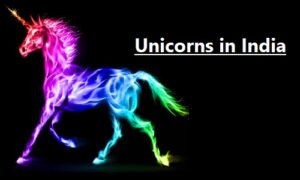Rainbows : Science and Mythology
Rainbows have captivated human imagination for centuries, appearing as enchanting arcs of color across the sky.
While science explains the phenomenon, myths and legends have woven tales around rainbows, attributing them mystical powers.
In this blog, we’ll unravel the science behind rainbows and explore the fascinating myths that have surrounded these colorful arcs throughout history.
Understanding the Science:
Understanding the science behind rainbows adds to the appreciation of these natural phenomena, transforming them from enchanting mysteries into beautiful expressions of physics and optics.
Rainbows are created through a combination of reflection, refraction, and the dispersion of light. Here’s a step-by-step explanation of how rainbows form:

- Sunlight: The process begins with sunlight. Sunlight is composed of a spectrum of colors, including red, orange, yellow, green, blue, indigo, and violet.
- Raindrops in the Atmosphere: When there are raindrops in the atmosphere, either from rain, mist, or spray, they act as tiny prisms. These water droplets can be thought of as miniature mirrors that can reflect, refract, and disperse light.
- Refraction: As sunlight passes through a raindrop, it undergoes refraction. Refraction is the bending of light as it enters a different medium. In this case, light enters the water droplet from the air.
- Internal Reflection: Once inside the raindrop, the light undergoes internal reflection off the inner surface of the droplet. This reflection causes the light to change direction.
- Dispersion: As the light exits the raindrop, it undergoes dispersion. Dispersion is the process by which light is spread out into its individual colors. Each color of light is refracted by a slightly different angle, resulting in the formation of a spectrum.
- Formation of a Circular Arc: The dispersed light exits the raindrop at various angles, creating a circular arc of colors. This arc is what we perceive as a rainbow.
- Primary and Secondary Rainbows: The primary rainbow is the brighter and more commonly observed one. The colors in the primary rainbow are arranged from the outer edge to the inner edge as red, orange, yellow, green, blue, indigo, and violet. Sometimes, a fainter secondary rainbow can be observed outside the primary one, with the order of colors reversed.
Observer’s Perspective: Picture yourself standing with your back to the sun, looking at the raindrops in the air. This is the perspective from which you can observe the beautiful rainbow.
Before diving into myths, let’s understand the science of rainbows. Rainbows occur when sunlight is refracted, reflected, and dispersed in water droplets in the atmosphere.
This dispersion of light results in the spectrum of colors that we see in a rainbow: red, orange, yellow, green, blue, indigo, and violet.
Rainbow Myths:
- The Bridge Between Earth and Heaven: Myth: In various cultures, rainbows were believed to be bridges between the mortal realm and the heavens. They were seen as pathways that gods used to travel between the two worlds. Reality: While rainbows are scientifically explained, their beauty has inspired awe and wonder, leading to imaginative tales of divine connections.
- Pot of Gold at the End: Myth: One of the most popular myths suggests that there is a pot of gold at the end of the rainbow. Leprechauns, mischievous Irish fairies, were said to hide their treasures there. Reality: The “end” of a rainbow is an optical illusion, as rainbows are circles. The idea of a pot of gold is a delightful fantasy rooted in the allure of hidden treasures.
- Rainbows as Divine Messages: Myth: In some cultures, rainbows were considered messages from deities or divine beings. They were seen as symbols of hope, promise, and blessings. Reality: While rainbows may not carry divine messages, their appearance often coincides with rain clearing, symbolizing hope and renewal.












I remembered this topic was in my school. and that time I was not able to remember spellings of refraction and reflection…:P